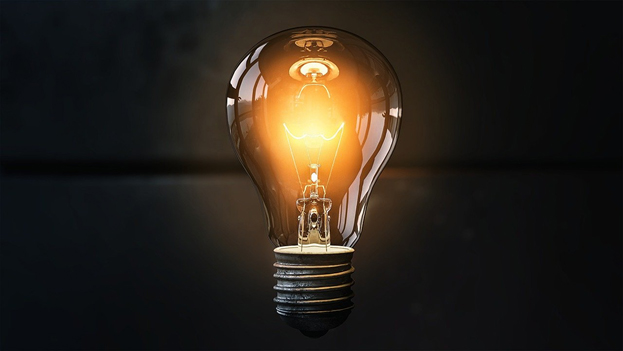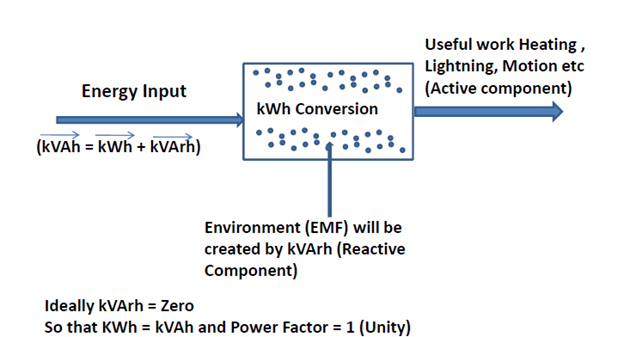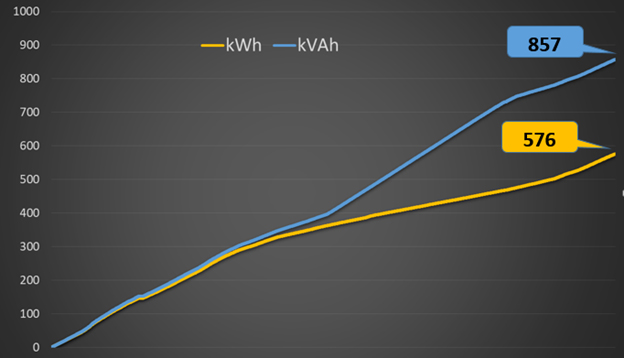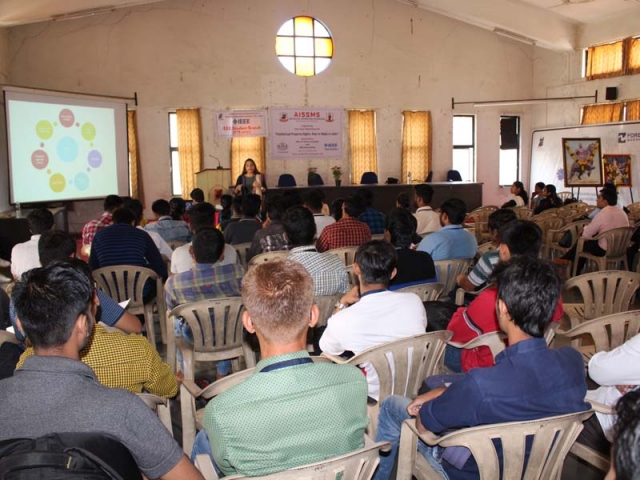This is custom heading elementDr. Shashikant Bakre
Professor
Department of Electrical Engineering
shashikant.bakre@aissmsioit.org
Prof. Sachin Shelar
Assistant Professor
Department of Electrical Engineering
PQ Cell In charge
sachin.shelar@aissmsioit.org
As we know, electricity was invented by Thomas Alva Edison in the year 1885. The credit of creating first electricity tariff also goes to Edison. In 1892, he started charging consumers in ‘per lamp’ basis. Later he developed chemical ampere-hour meter. In the year 1889, Nikola Tesla invented AC system based on which Load Ferrari developed electromechanical energy meter. In 1915, the rkVAh meter was developed and the first kVAh meter was constructed in the year 1935.
There are three components of electric power, namely Real Power or Active Power (P), Reactive Power (Q) and Apparent Power (S). The Real, Reactive and Apparent Power are expressed in units kW, rkVA and kVA respectively. The respective energies are specified in kWh, kVAh and rkVAh.
Real Power is a useful power for applications such as mechanical rotations, heat and temperature generation, lighting etc. The traditional electricity billing system is based on kWh parameter.
Reactive Power comes with the Real Power. It is useful for creating magnetic flux to run electrical machines. However, the quantum of Reactive Power required generating flux is lesser. The balance reactive current flows in the system and makes system components such as relays, switches, NO/NC contacts sluggish and insensitive. High Reactive Power is also a cause of poor power factor. It is therefore desired to have minimum reactive power or ideally zero reactive power. The power factor is unity at zero reactive power.
Apparent Power is the resultant of Real and Reactive Powers. It is the vector sum of Real Power P and Reactive Power Q.

Fig 1 Power Triangle
As shown in Fig 1, the quantities P, Q and S are represented by a power triangle.
Power Factor is described in various ways as stated below-
- Power factor is the degree at which the power delivered to the given load matches resistive load under same conditions.
- It is cosine of angle between Real Power and Apparent Power.
Ideally the power factor is required to be unity. However, the power factor is leading if the load is predominantly capacitive and lagging if the load is predominantly inductive. PF incentives are given on electricity bill if the Power Factor is between 0.95 to 1. On other hand, penalties are levied if the Power Factor is below 0.9. It is therefore required that consumer should maintain higher power factor above 0.95 through proper compensation.

Two Part Tariff:-
Generally, the two-part tariff is followed by distribution utilities for the billing of electrical energy. The two parts are – fixed charges based on installed capacity and variable charge which is based on energy utilized actually.
Further, the two additional components namely Electrically Duty which is usually some % of billed energy and Fuel Cost Adjustment (FCA) charges are included in the bill. Thus, the total billed amount is calculated as follows- 16% – Example value
kWh billing system:-
At present, in Maharashtra, the consumers are billed on Active Energy Consumption measured in kWh alongwith other components such as ED and FCA described above.
In kWh billing system, the incentives/ penalties are levied on Power Factor.
kVAh billing System:-
In kVAh based billing system, the fixed charges or demand charges are levied on apparent power (kVA) and energy charges are levied on apparent energy (kVAh).
Because of kVAh billing system, Real and Reactive energies need not be charged separately.

Fig 2 – Utilization of energies (Source - MSEDCL Presentation on KVAH)
Necessity of kVAh billing:-
Both Active (kWh) and Reactive (kVArh) energies are consumed simultaneously. Reactive Energy (kVArh) occupies the capacity of electricity network and reduces the useful capacity of system for generation and distribution & hence its consumption also needs to be billed. kWh based billing is associated with PF incentive /penalty mechanism. Considering that the kVAh based billing has an inbuilt incentive /penalty mechanism and separate mechanism for the same is no more required; instead of billing two energies separately, billing of kVAh energy is preferred as a commercial inducement.
The consumer is encouraged to draw/inject minimum reactive power.
Implementation of kVAh billing system:-
State Electricity Regulatory Commissions in various States viz. Himachal Pradesh, Delhi, Uttar Pradesh, Jammu & Kashmir, Andhra Pradesh, Chhattisgarh, Bihar, Haryana, Punjab etc. have already introduced kVAh based tariff for various categories.
In the state of Maharashtra, as per MERC Order in Case no. 195 of 2017 dated September 12, 2018, The Commission intends to implement kVAh billing to all HT consumer and LT consumers having load above 20 kW from 1st April 2020.
Advantages of kVAh billing system:-
Advantages to consumer:-
- kVAh billing will ensure that the consumers who will utilize the power efficiently will be paying less energy charges as compared to others who are not using the power efficiently.
- The new billing methodology will be much simpler to understand as number of parameters viz. PF, rkVAh (lead/lag), kWh units) will be reduced.
Advantages to utility:-
- Good system stability, improved power quality, improved voltage profile and reduced capital expenditure.
- Complete recovery of cost of active and reactive powers.
- Zero/ minimal drawl of reactive power by consumers.
- Reduction in power purchase cost
Thus, considering the larger benefit of consumers as well as the utility, it is important that the existing billing regime can be migrated to kVAh based billing.
Comparison between kWh and kVAh billing systems:-
The comparison between kWh and kVAh billing systems is illustrated in following table.
| Particulars | kWh billing system | kVAh billing system |
|---|---|---|
| Billing parameter | kWh | kVAh |
| Type of tariff | Two-part tariff | Two-part tariff |
| Meter Standard | IEC 687 | IEC 687 |
| Report Generation | Current data, Load Survey data, Billing data & Tamper data. | Current data, Load Survey data, Billing data & Tamper data.
|
| Meter Testing | Mainly Dial Test & Accuracy Test are conducted. | Mainly Dial Test & Accuracy Test are conducted. |
| Power Factor Monitoring (for utility) | Required for PF incentives/ disincentives | Not required as PF is in-built. |
| Billing Formula | Demand Charge + Energy Charge for kWh + ED + FCA | Demand Charge + Energy Charge for kVAh + ED + FCA |
| Reactive Power | Monitored through power factor | Consumer drawing and injecting more reactive power will have to pay extra and vice versa. |
Probable Impact of KVAH Billing - Case Study

The above graph shows unit consumptions of a HT Consumer for one day. It can be seen that after 24 hours kWh recorded is 576 and kVAh recorded is 857. Thus, there is difference of 281 units. The customers average rate is Rs. 15/- per kWh (Considering all bill components). So, per day increase for this customer is Rs.15/- X 281 = Rs. 4215/- which amounts to monthly increase of 1,26,450/- and yearly increase of 15,17,400/-.
This clearly indicates that for those customers who do not take care of their reactive power will have to pay high amount after introduction of kVAH Billing.
Steps to be taken by Customers:-
- Study existing electricity bills
- Get the Energy Profiling done
- Get the Reactive Power Survey
- Design of New Reactive Compensation
- Check for Harmonics
- Install/Modify Reactive Compensation System
- Install Energy Monitoring System
- Monitor kVAH daily
By
Dr. Shashikant Bakre
Professor
Department of Electrical Engineering
(shashikant.bakre@aissmsioit.org)
And
Prof. Sachin Shelar
Assistant Professor
Department of Electrical Engineering
PQ Cell In charge
(sachin.shelar@aissmsioit.org),
AISSMS IOIT, Pune

















